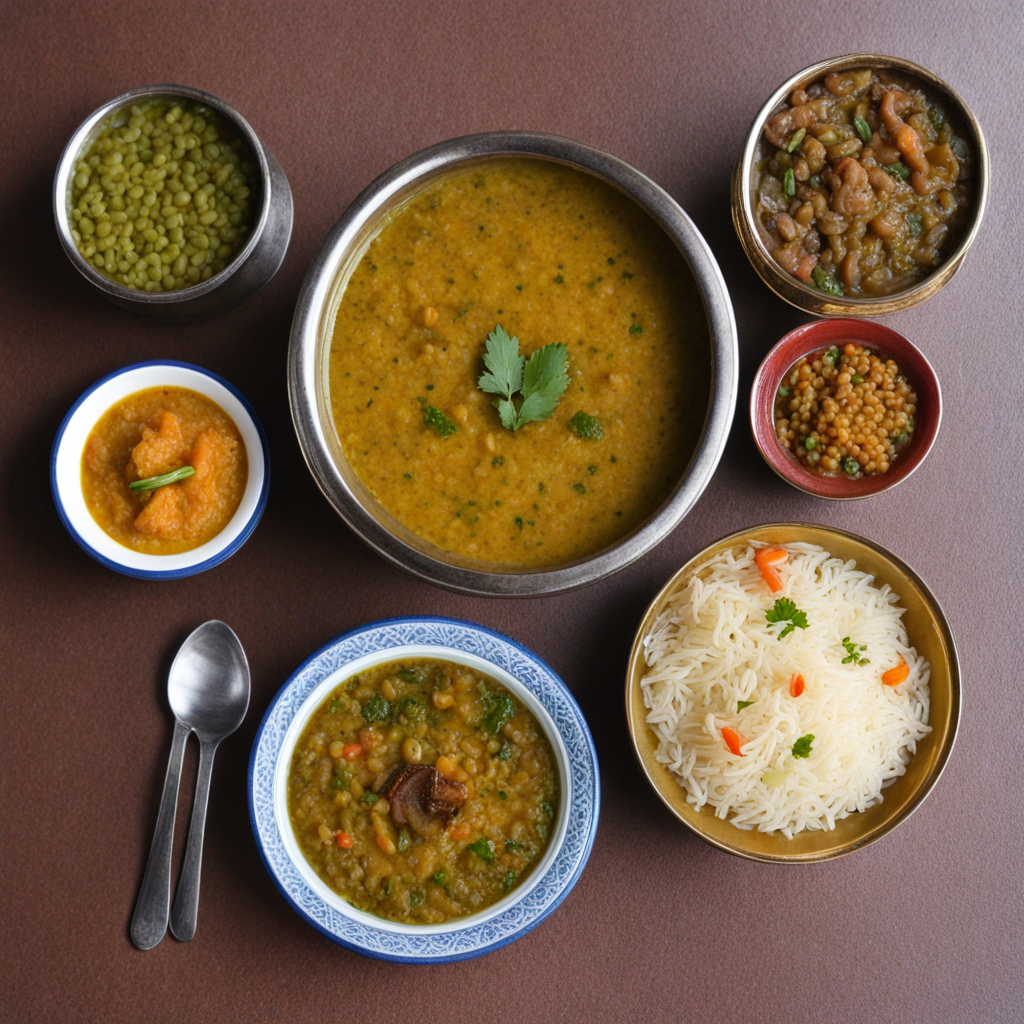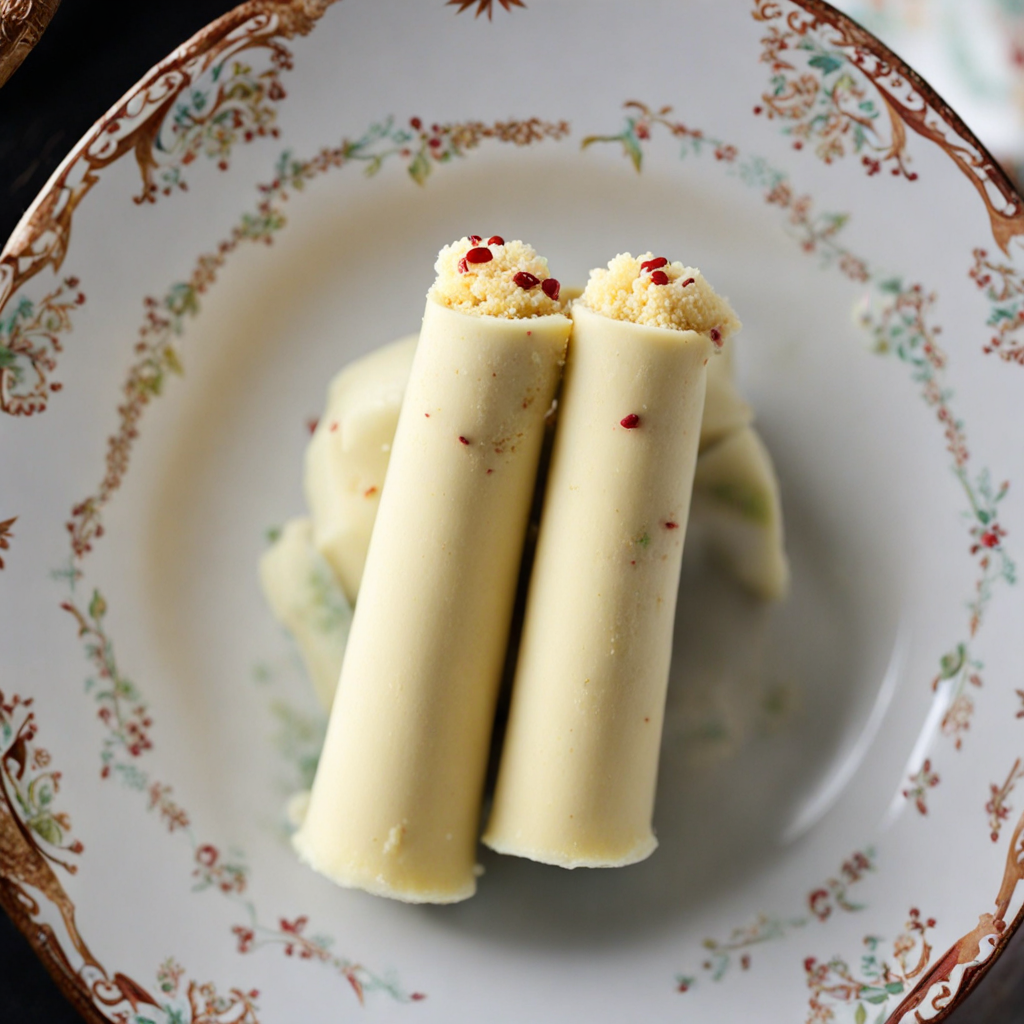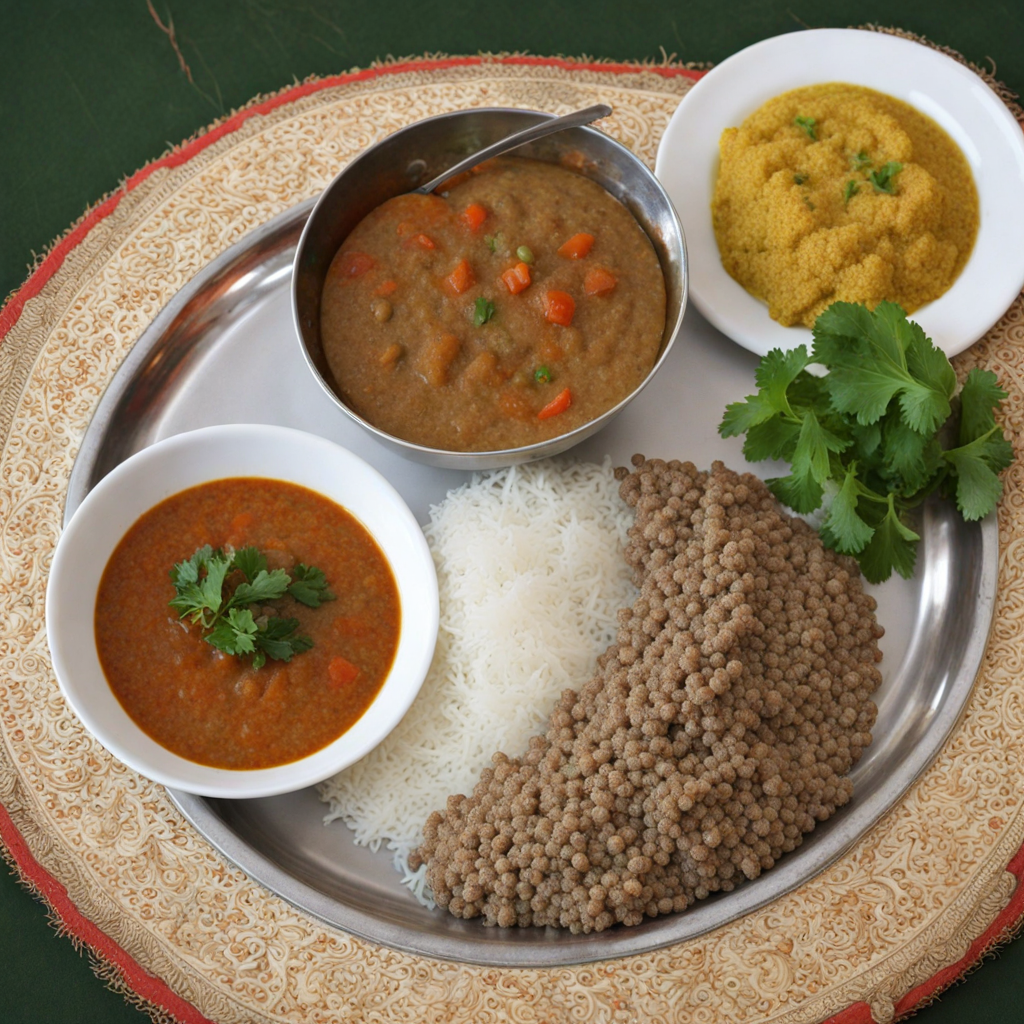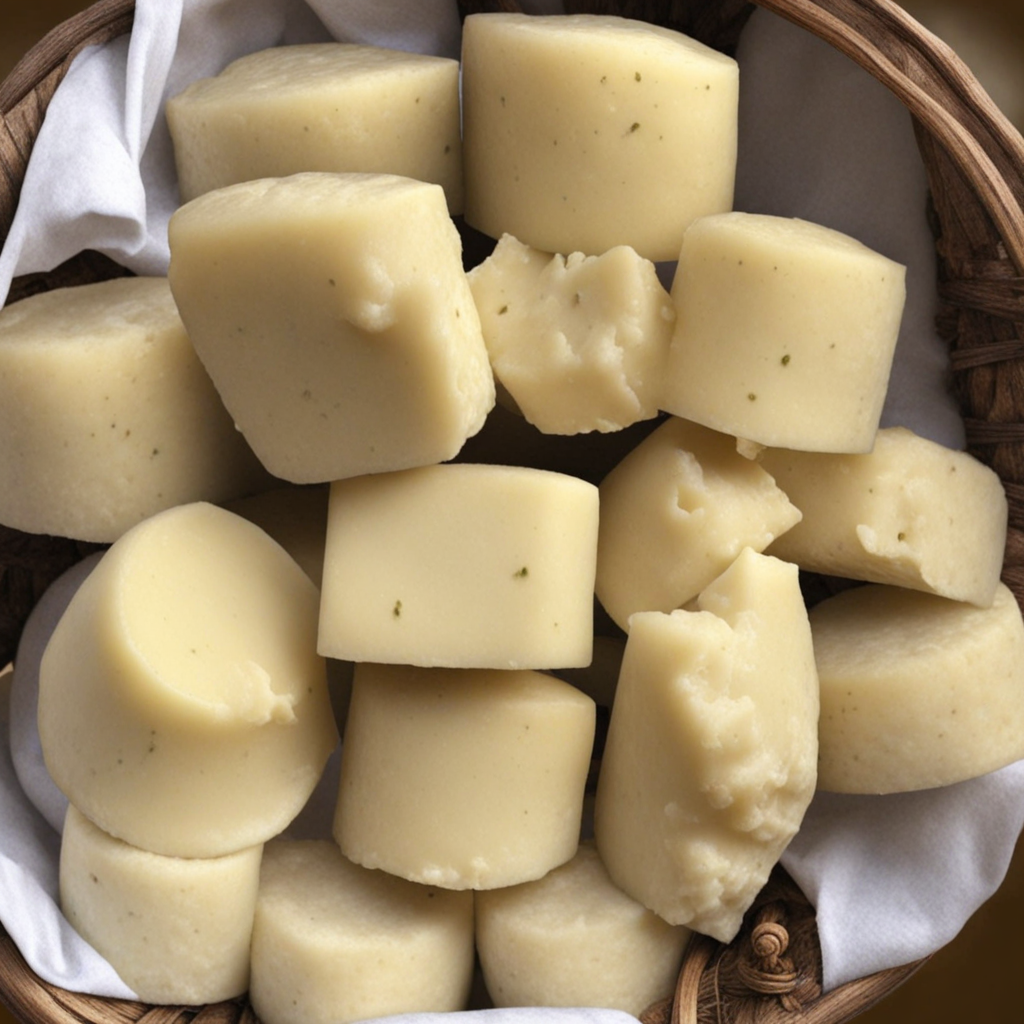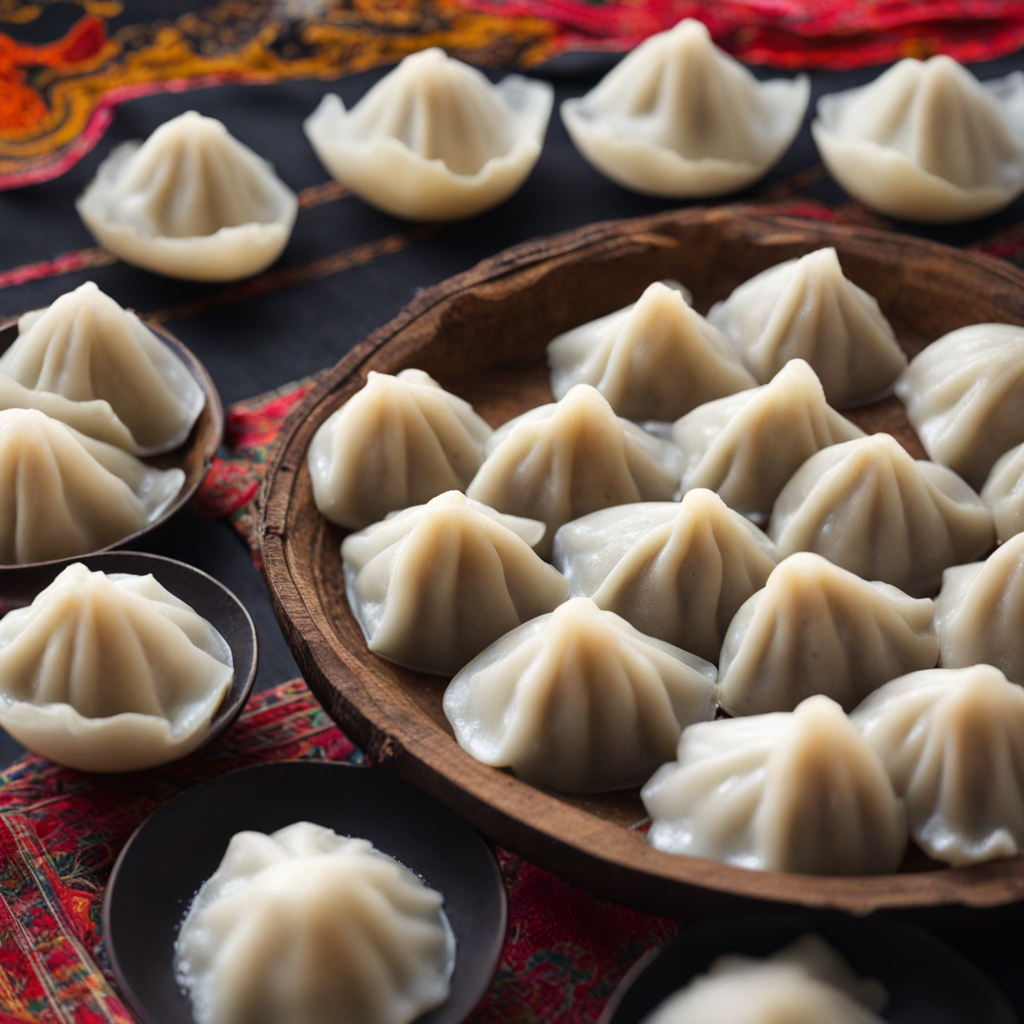Daal Bhat
Daal Bhaat is a quintessential dish from Nepal, deeply rooted in the country’s culinary traditions and daily life. This meal consists primarily of two components: 'daal', which refers to lentil soup, and 'bhat', meaning steamed rice. It is a staple food for many Nepalis and is often enjoyed with various accompaniments, making it a complete and balanced meal. The dish embodies the essence of Nepali comfort food and is cherished for its nutritional value and satisfying nature. Historically, daal bhat has been a significant part of the Nepali diet for centuries. Its origins can be traced back to the agricultural lifestyle of the Nepali people, where lentils and rice were cultivated widely across the diverse geographical landscape of the country. The dish gained prominence not only due to its accessibility but also because of its adaptability to local ingredients and flavors. It serves as a daily sustenance for most households, reflecting the communal culture of sharing meals in Nepali society. The flavor profile of daal bhat is rich and varied, often enhanced by the use of spices and herbs. The daal itself can be made from different types of lentils, such as red lentils (masoor), yellow lentils (moong), or black lentils (urad), each imparting its unique taste and texture. The soup is typically seasoned with ingredients like turmeric, cumin, garlic, ginger, and sometimes a hint of green chili for a mild kick. The bhat, or
How It Became This Dish
The History of दाल भात (Daal Bhat) in Nepal Introduction Daal Bhat, a staple dish of Nepal, is more than just a meal; it is a representation of the country’s rich agricultural traditions, diverse cultures, and social fabric. The combination of daal (lentils) and bhat (rice) serves as a culinary anchor for many Nepalese families, symbolizing nourishment, hospitality, and communal identity. This essay delves into the origins, cultural significance, and evolution of Daal Bhat in Nepal, illuminating its role in the lives of the people. Origins of Daal Bhat The roots of Daal Bhat can be traced back to ancient agricultural practices in the Indian subcontinent, where rice and lentils have been cultivated for thousands of years. Archaeological evidence suggests that rice was domesticated in the region around 2000 BC, while lentils have been a dietary staple since the Neolithic period. As the ancient civilizations flourished, these two ingredients became central to local diets, particularly in the Himalayan region. In Nepal, the cultivation of rice and lentils is closely linked to the monsoon season, which provides the necessary climate for these crops. The diverse geography of Nepal, from the Terai plains to the mountainous regions, allows for various types of rice and lentils to thrive, leading to regional variations in the dish. The influence of neighboring cultures, particularly from India and Tibet, has also played a significant role in shaping the culinary practices surrounding Daal Bhat. Cultural Significance Daal Bhat is more than just food; it is a cultural cornerstone in Nepalese society. Traditionally served as part of a larger meal, it is often accompanied by vegetable curries, pickles (achar), and sometimes meat. The dish is deeply ingrained in daily life, often consumed twice a day, and serves as a bridge between generations. In Nepalese households, especially in rural areas, preparing Daal Bhat is a communal activity. Family members come together to cook, eat, and share stories, reinforcing the bonds of kinship and community. The act of serving Daal Bhat to guests is considered a gesture of hospitality and respect, reflecting the cultural ethos that values generosity and warmth. Moreover, Daal Bhat is often associated with various festivals and rituals. In many communities, it is customary to prepare special versions of the dish during celebrations, incorporating seasonal ingredients or traditional spices that reflect the cultural identity of the region. For instance, during Dashain, one of the most significant festivals in Nepal, families might include meat in their Daal Bhat, celebrating the occasion with a feast. Development Over Time Throughout history, the preparation and presentation of Daal Bhat have evolved in response to changing social and economic contexts. During the 18th and 19th centuries, as the Gorkha Kingdom expanded, the culinary traditions of the ruling class began to influence those of the common people. This period saw the introduction of more elaborate dishes and the incorporation of spices, which enriched the flavor of Daal Bhat. The introduction of modern cooking techniques and ingredients in the 20th century further transformed the dish. With the advent of urbanization and globalization, many Nepalese families began to adapt their cooking methods and recipes. Instant lentils and pre-packaged rice became available, allowing for quicker meal preparation and catering to the fast-paced lifestyles of urban dwellers. However, traditional recipes and methods remain cherished and are passed down through generations, preserving the essence of Daal Bhat. In recent years, the rise of health consciousness and dietary diversity has led to new interpretations of Daal Bhat. While the traditional dish remains popular, variations have emerged, including the use of quinoa, millet, or brown rice as alternatives for health-conscious consumers. Additionally, vegetarian and vegan lifestyles have gained traction, prompting innovative recipes that emphasize plant-based ingredients while maintaining the core components of the dish. Regional Variations Nepal’s diverse ethnic landscape contributes to the many regional variations of Daal Bhat. In the Terai region, for example, the dish is often served with a spicier lentil soup and accompanied by vegetable curries made from local produce. In the hilly regions, people may prefer a thicker consistency for the daal, sometimes flavored with herbs like coriander or fenugreek. The Newar community, known for its elaborate culinary traditions, includes unique elements such as fried fish and roasted meats, showcasing the versatility of Daal Bhat in their festive feasts. Contemporary Significance In contemporary Nepal, Daal Bhat continues to hold a vital place in the national identity. The dish is often featured in restaurants, food festivals, and cultural events, attracting both locals and tourists alike. The government and various organizations promote Daal Bhat as a symbol of Nepalese heritage and a dish that embodies the country's agricultural richness. Moreover, Daal Bhat has gained international recognition, appearing on menus in Nepalese restaurants around the world. This globalization of the dish serves not only as a culinary adventure for food lovers but also as a means of cultural exchange, allowing people to connect with Nepalese traditions through its flavors. Conclusion Daal Bhat is more than mere sustenance; it is a reflection of Nepal’s history, culture, and communal values. From its ancient origins rooted in the agricultural practices of the region to its contemporary adaptations, the dish has stood the test of time, remaining a beloved staple for generations. As it continues to evolve, Daal Bhat serves as a culinary symbol of Nepal, embodying the spirit of hospitality, togetherness, and cultural identity. Whether enjoyed in a humble home or a bustling restaurant, Daal Bhat remains a cherished part of the Nepalese experience, a reminder of the land’s rich heritage and the enduring power of food to unite people.
You may like
Discover local flavors from Nepal



